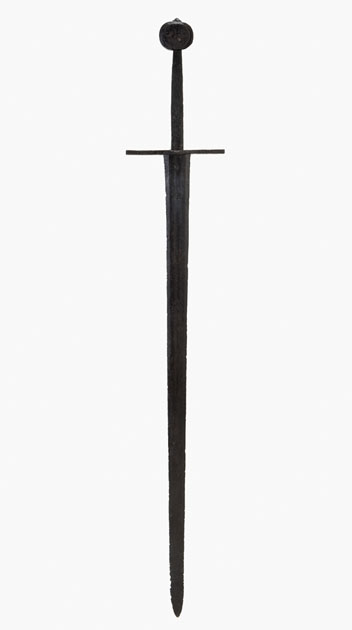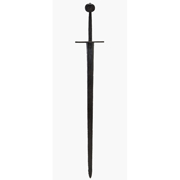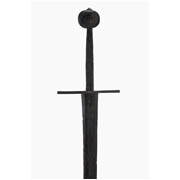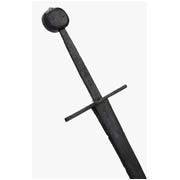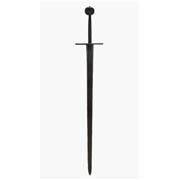Details
- Object type
longsword
- Date
circa 1325-1350
- Materials
steel, latten
- Dimensions
overall: 1300 mm x 210 mm x 25 mm 2310 g
- Description
-
Many romancers and chroniclers wrote vivid descriptions of the great chivalric feats of knights cleaving their enemies with weapons like this.
Some men were so adept with it that they were named after it such as Sir William Longespee. He was hacked limb-from-limb in battle in 1250 rather than surrendering to his foes. Later scholars dismissed many of the accounts of swords doing such damage as hyperbole. However, the discovery of a mass grave in the late-19th century changed this perception. It contained the skeletal remains of men and boys killed in battle at Gotland fought in 1361. The horrific injuries evident on the bones starkly demonstrated just how effective weapons like this were. Skulls, arm, leg, and spinal bones had been cut right through.
The shape of the blade and hilt can be compared with examples in other collections as well as contemporary artwork. The blademaker’s mark of an encircled cross is also indicative of an early date. This is one of the earliest known longswords of its type in existence.
- Credit Line/Donor
Gifted by Sir William and Lady Burrell to the City of Glasgow, 1944
- Collection
Burrell Collection: Arms and Armour
- ID Number
2.78
- Location
Burrell Collection
